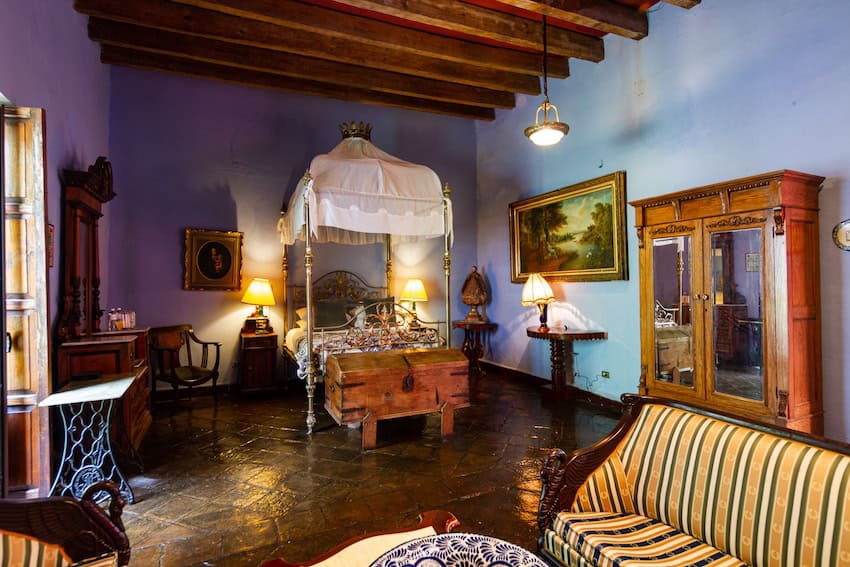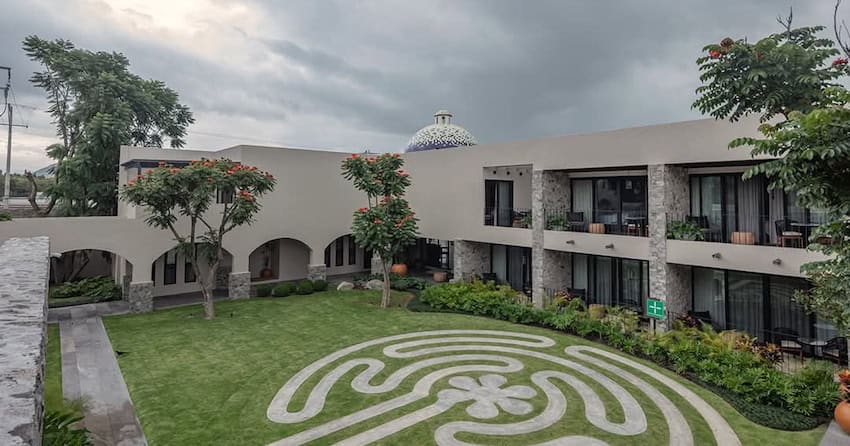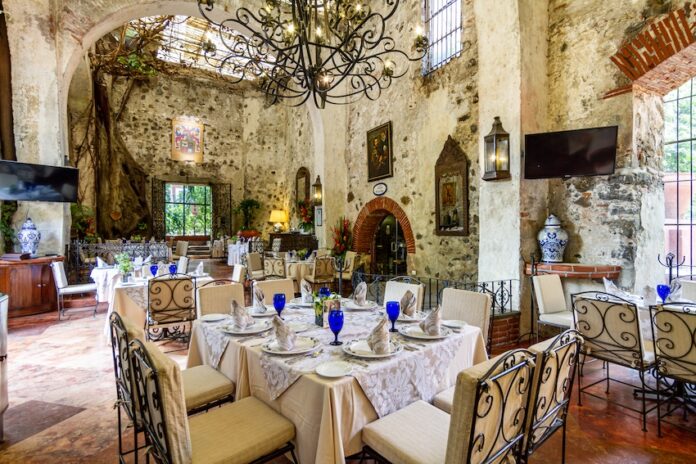It’s starting to feel like every new hotel worldwide is cut from the same cloth. Each corner is curated with Instagram in mind, from the expected Edison bulb fixtures to mass-produced “locally-influenced” artwork. The lobby bartender sports a denim apron while mixing that flower-topped crafted cocktail you just ordered from a QR menu stamped on a coaster. Don’t worry, though: The drink is mezcal-based — a supposedly authentic nod to Mexico’s deep-rooted agave culture.
While many vacation rental platforms and international hotel chains have homogenized travel experiences across the globe, Mexico has quietly built something real travelers crave: a network of irreplaceable hotels that Hilton cannot replicate.

The birth of something authentic
In 2000, a group of hoteliers approached Leobardo Espinosa, owner of Puebla’s Mesónes Sacristía, with an ambitious proposal. They wanted to save historic buildings by converting them into hotels and restaurants, and in doing so, create a consortium that both represented Mexican identity and supported traditional culture.
At the time, Puebla had little to offer tourists in terms of hotels and restaurants, so the group headed south to Michoacán. Their idea proved successful. Within eight years, a premium certification program was introduced, and properties that met certain quality standards and embodied Mexico’s cultural, architectural and gastronomic heritage were inducted.
Today, that consortium is known as Tesoros de México, and it encompasses 130 properties across 48 cities in 13 states.
The unreplicable advantage
“What makes the difference is that none of the Tesoros hotels and restaurants can be replicated,” explains Leobardo Espinosa, former president of the Tesoros consortium and current owner of two colonial-era mansions-turned-boutique-hotels in Puebla city — Mesón Sacristía de la Compañía, once described by Journey Mexico as “cute, kitsch and ever-so colorful, a beautiful expression of Mexico, old and new,” and the nearby Sacristía de la Soledad, rented in its entirety to a single party seeking a private experience.
Unlike branded hotels that roll out identical designs across continents, Tesoros properties start with something no corporate headquarters can manufacture: history.
Many Tesoros hotels occupy buildings protected by the National Institute of Anthropology and History (INAH), which requires at least 60% of the structure’s original construction to be authentically preserved. Maintaining a 250-year-old mansion’s structure while modernizing it for today’s guests presents some challenges, but it ensures centuries of local history isn’t bulldozed for a luxury brand name.

The program’s rigorous standards go far beyond facades. Everything inside matters, from thread counts to room sizes, specific bedding quality and Mexican-made amenities. Lighting and ventilation must be current, while artwork and furniture should reflect Mexico or be crafted by Mexican artists. Restaurants must source local ingredients whenever possible, with recipes traditional to the region.
Over 500 requirements must be met, making the process to become a Tesoros property exclusive and often lengthy.
Where authenticity meets economics
This isn’t preservation for preservation’s sake, but instead strategic economic development. “Almost everything is made in Mexico, and some is made in the community itself, such as textiles provided by local women using traditional techniques,” Espinosa notes. While Airbnb or resort chains source furnishings from global suppliers, Tesoros hotels say they create local supply chains that keep tourism dollars circulating in Mexican communities.
The seven Tesoros member hotels and restaurants in Morelos state, for example, support local chefs and exhibit art made by Mexican artists. In Puebla, local textile producers participate in interior design efforts while nearby suppliers provide cheese, honey and other ingredients for traditional dishes of the state like mole or chile en nogada.
The effects extend beyond direct employment. “Many small hotels see Tesoros de México as a goal,” Espinosa explains. “It lifts the standard, even if they’re not in the program.” This aspirational quality means the certification influences far beyond current members, inspiring small hotel owners to showcase their property’s authentic character.

The real challenge: Perception versus reality
While competition with Airbnb and international chains poses challenges, Espinosa identifies a deeper threat: people’s perception of security.
“The main threat is security and the perception of insecurity. Perception is often more influential than reality,” he says.
A 2023 report by the Center for Tourism Research and Competitiveness (Cicotur) at Anáhuac University found that nearly 94% of tourism service providers in Mexico warn about insecurity’s negative effects. States like Michoacán and Guanajuato have been particularly impacted by increased organized crime-related violence and infrastructure disruption.
The impact of potential tourists’ perception of safety extends beyond hotels and restaurants to surrounding working-class and rural communities who rely on programs like Tesoros for regular income. When visitor numbers drop, everyone from farmers to artists suffers immediate hardship. Addressing this perception gap is critical not only for individual hotels but for entire regions dependent on tourism.
A growing movement
For North American travelers weary of identical experiences, Tesoros represents something increasingly rare: authenticity. Since Mexico’s Tourism Ministry obtained the rights to officially manage and regulate Tesoros de México in 2008, new properties have joined annually, and plans are in the works to increase membership growth with locations that best reflect the country’s unique character.
The newest addition is in Atlixco, Puebla. Hacienda Santo Cristo is a recognized historic monument that dates back to 1540. After falling into disrepair, the INAH supervised a meticulous three-year restoration under which 80% of the hacienda’s colonial architecture has been preserved, including original walls made from volcanic stone and brick. It now functions as a luxury hotel and event space with two restaurants, a spa, a pool and spectacular views of the Popocatépetl volcano.
The future of authentic travel
Tourism to Mexico is booming. TripAdvisor named Cancún the top vacation destination for North Americans in 2025. However, for those seeking something different, genuine and irreplaceable, initiatives like Tesoros de México represent more than a certification program. As hospitality platforms and chains typically optimize for efficiency and scalability, Tesoros optimizes for something that can’t be quantified: a true sense of place.
Bethany Platanella is a travel planner and lifestyle writer based in Mexico City. She lives for the dopamine hit that comes directly after booking a plane ticket, exploring local markets, practicing yoga and munching on fresh tortillas. Sign up to receive her Sunday Love Letters to your inbox, peruse her blog or follow her on Instagram.
